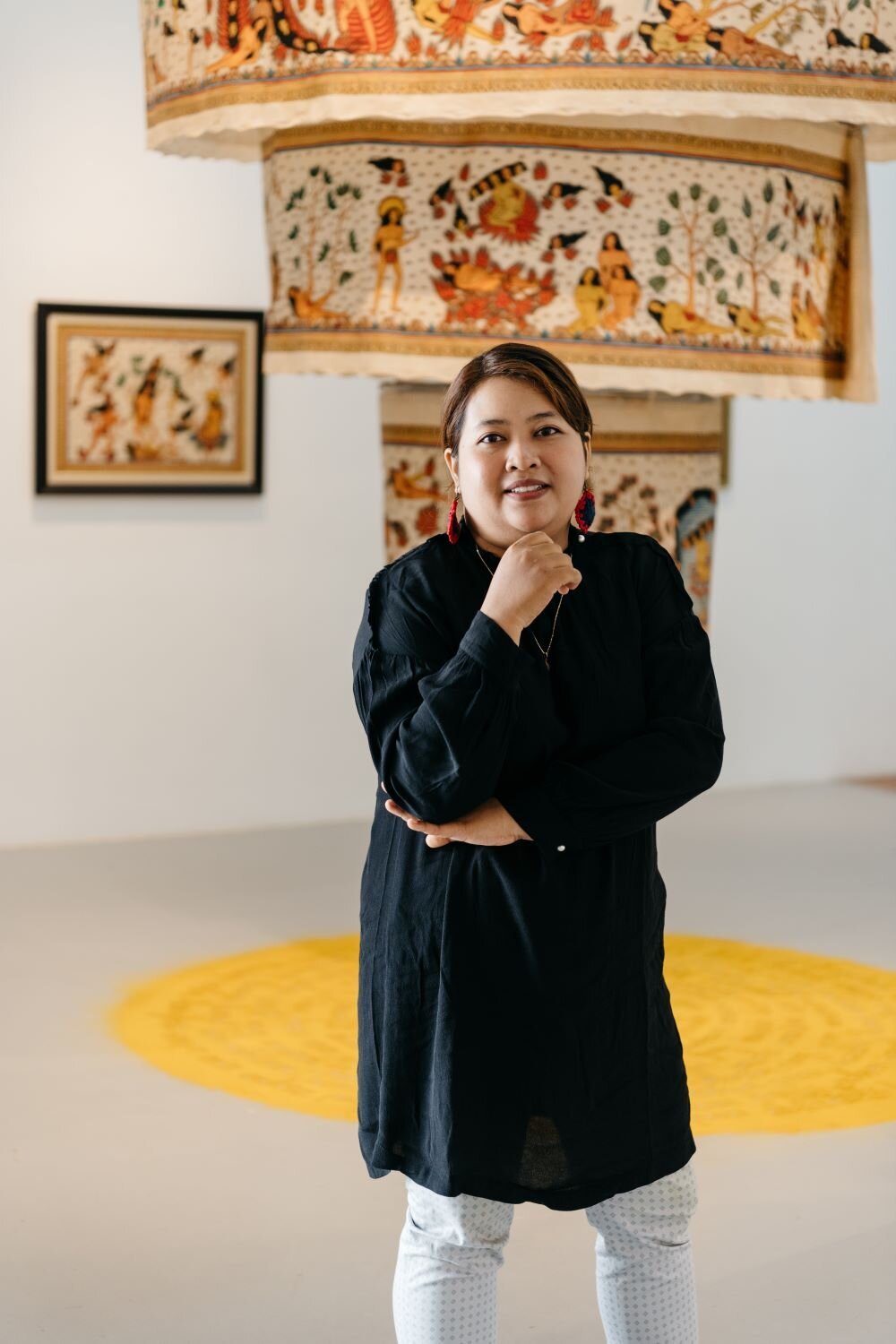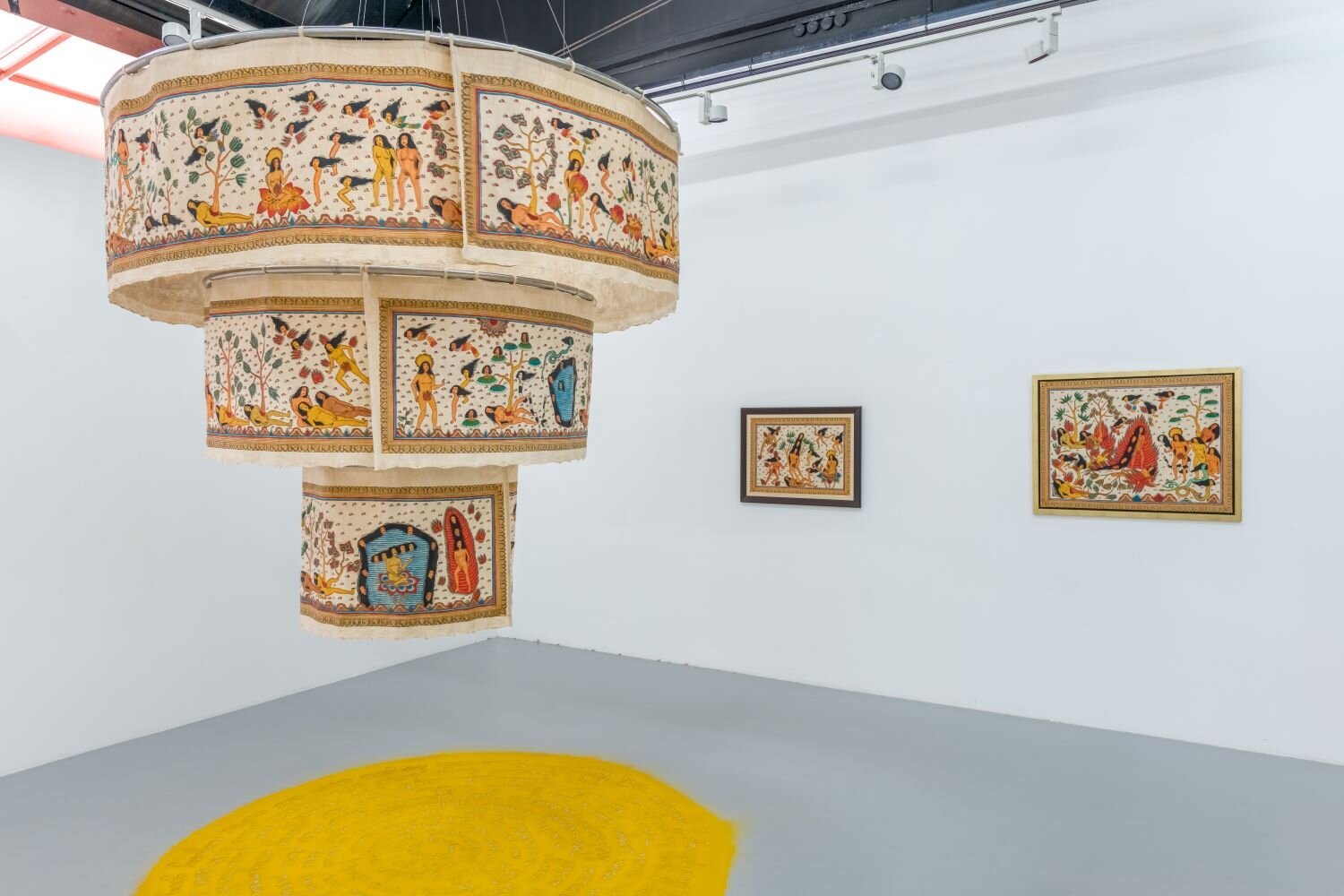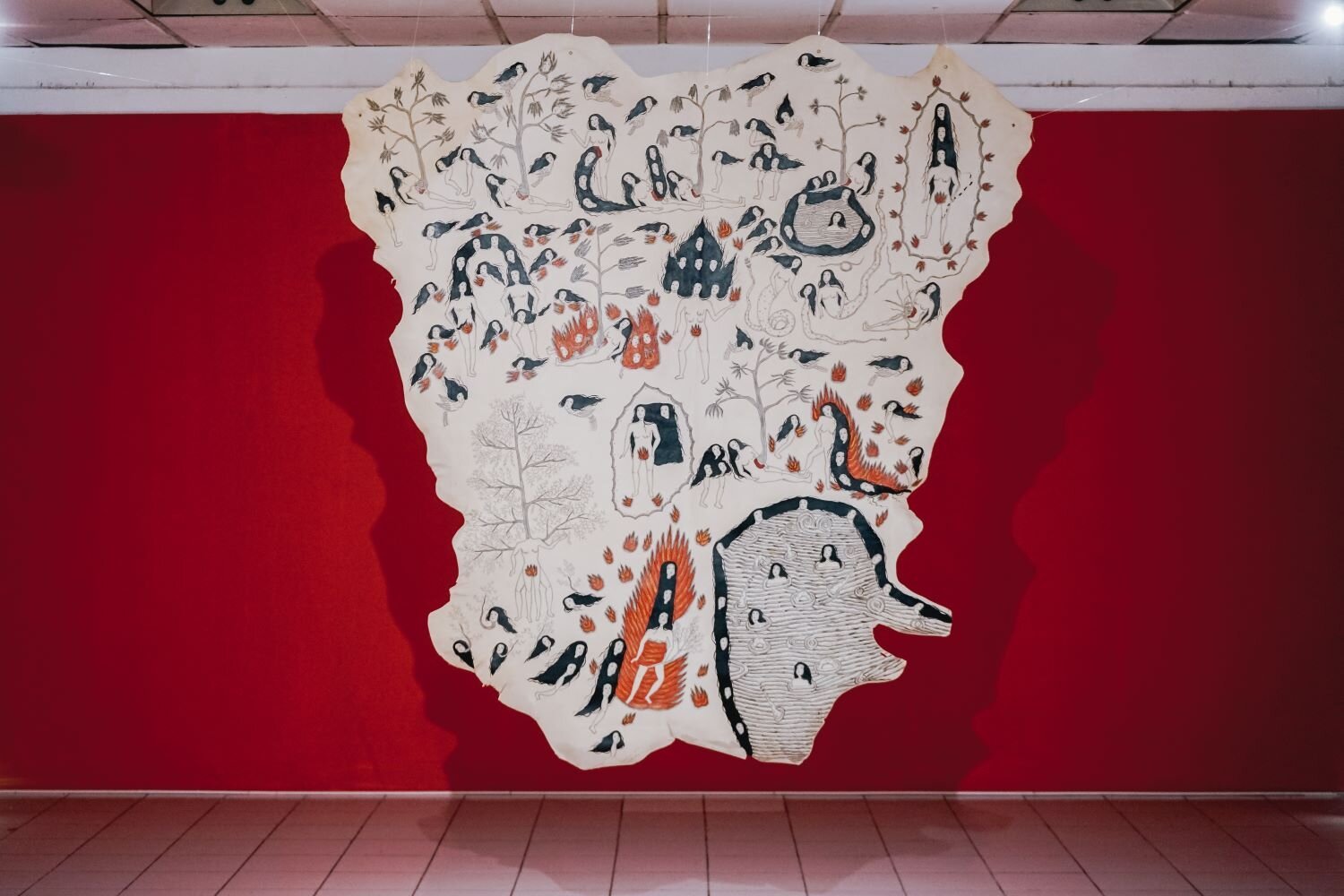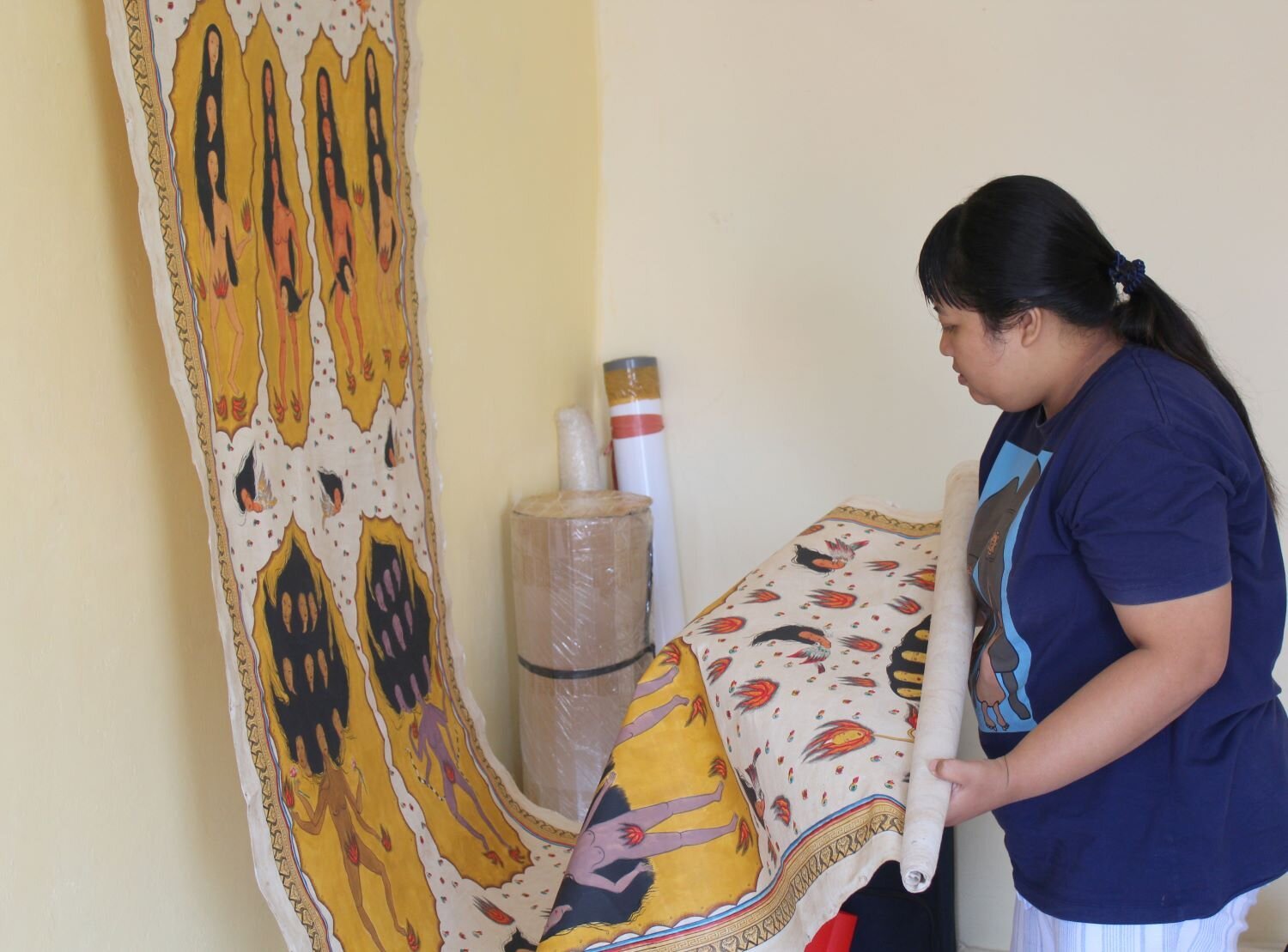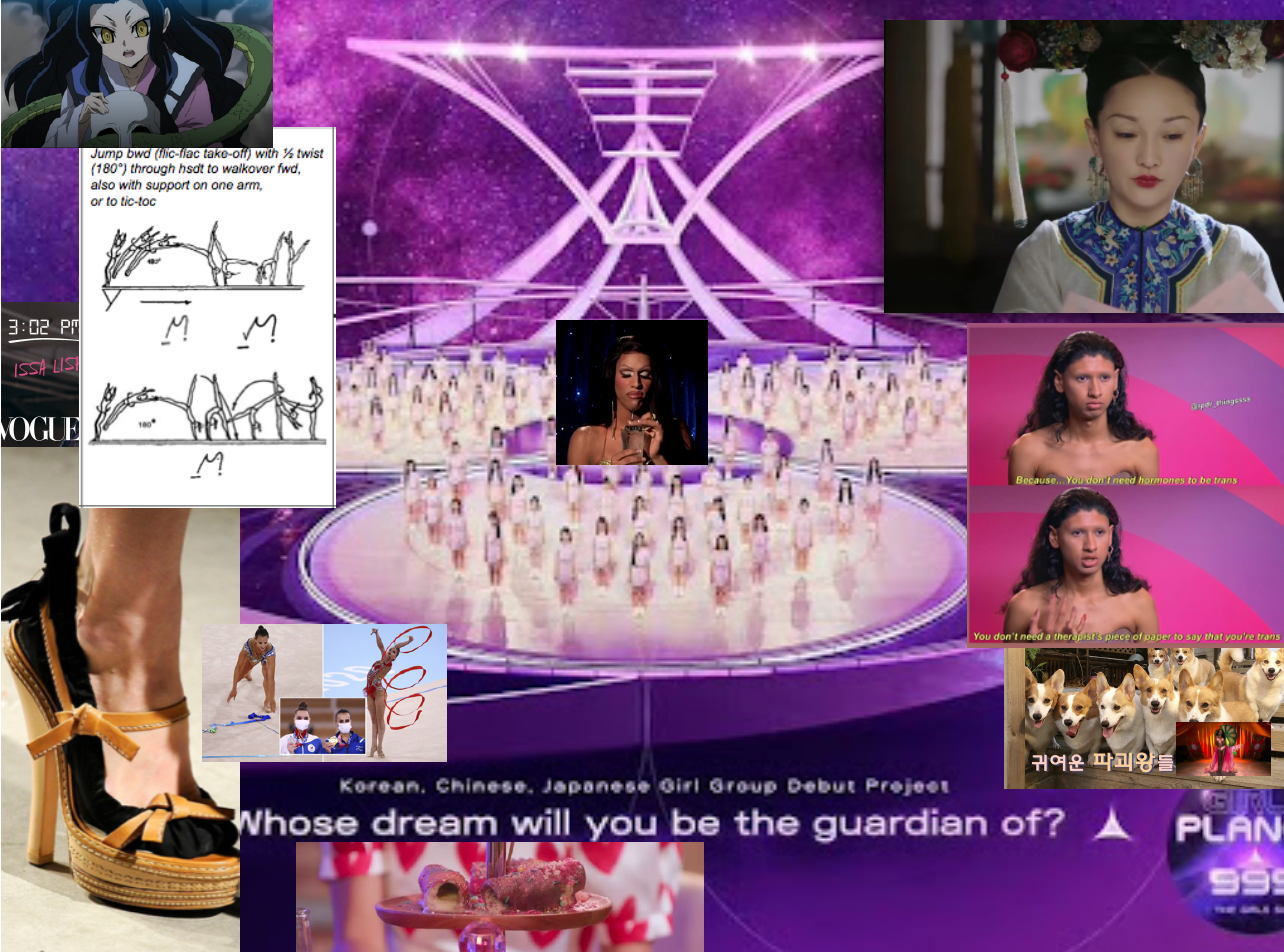Conversation with Balinese Artist Citra Sasmita
Challenging status quo in the “last paradise”
By Ho See Wah
Citra Sasmita. Image courtesy of Yeo Workshop.
Born in 1990, Citra Sasmita is a contemporary artist from Bali whose work focuses on unravelling the myths and misconceptions of Balinese art and culture. She is also deeply invested in questioning a woman’s place in the social hierarchy, and seeks to upend normative constructs of gender. Because of her interests, the artist’s oeuvre is often peppered with provocative themes that challenge the status quo, whether in its aesthetics or the message that it conveys.
Citra has participated in shows such as ‘Merayakan Murni’ at Sudakara Artspace Sanur, Bali in 2016, ‘Crossing: Beyond Baliseering’ at 45downstairs, Melbourne in 2017, and the recently concluded ‘Ode to the Sun’ at Yeo Workshop, Singapore. Notably, Citra participated in the Biennale Jogja Equator #5, ‘Do We Live in the Same Playground’, in 2019.
In this conversation, we speak to Citra about how she started her artistic career, the historical and social contexts that inspire her work, and her views on the contemporary art scene in Bali.
Citra Sasmita, ‘Season's Ballad’, 2020, acrylic on traditional kamasan canvas, 70 x 90cm. Image courtesy of Yeo Workshop.
You studied literature and physics in university, and became more involved in the arts after joining a theatrical troupe in university and illustrating short stories for Bali Post. How did you get the opportunity to break into the art scene after that?
I was interested in the art world from the start, but fate had not opened the door for me to engage directly in this world. Pursuing the standard path to success was the choice at that time, such as following the structured world of academia or being prepared for the working world. It was when I joined the campus’ theatrical troupe that I discovered literature and the visual arts, which I initially thought were leisurely activities.
I became more serious when I accidentally met the editor of Bali Post, Oka Rusmini in 2012, when I was invited to read poetry on a TV station. He saw my sketches and recruited me as a short story illustrator for the newspaper. I worked for five years and during that time, I was intensively translating literary language into visual language, which allowed me to seriously learn about the visual arts and art history. When the short story section was abolished in June 2018, I decided to become a full-time artist.
I tried for many opportunities, such as open submissions for exhibitions, and open calls for art residencies and fine art competitions. I learned a lot from this process and my ensuing failures, especially on having my own methodology and ways of thinking as a contemporary artist who not only has to think about art production, but also about actively producing knowledge.
Additionally, I set about creating my own momentum instead of waiting for opportunities to come to me. I put together my first exhibition in Bali, ‘Maternal Skin’ at Ghosbird + Swoon in 2015. Apart from simply offering a two-dimensional visual work, I also wrote down my ideas and analysis to distribute to visitors.
Every exhibition that I do allows me to learn and to better understand the mechanisms of the art world, so that I can find my identity as an artist. It also allows me to meet the right people who can keep artists like me principled with regards to the ideology of our work. This is quite important for surviving the challenging world of art.
In your essay, ‘Metanarasi Perempuan Dalam Seni Rupa’, you talk about the difficulties of being a Balinese female artist. When was the essay published, and what prompted you to write it?
I wrote the essay when I started my career as an artist. There are many assumptions about how women are not suited to be artists, and are instead better as objects in paintings. In response, I analysed the social situations that give rise to such thoughts. I also examined the various challenges faced by female artists and the difficulties they face in gaining appreciation, support and a platform for themselves so as to survive in this industry. I also describe the cultural challenges that they often face and why they should be considered intellectual equals with male artists.
In particular, the patriarchal and feudal culture in Bali causes an extreme inequality of power against women artists. This creates obstacles to their practices as they are limited to a very personal scope, and are unable to escape this stereotype to discuss complex social issues in their work.
I sent this essay to various media companies. It was published in a women’s journal in 2015, and this became a transparent and objective way for me to counter the various criticisms that I’ve received. It’s also a way to discuss having a healthy critical culture and an objective perspective when viewing art.
Citra Sasmita, ‘Ode to the Sun’, 2019, exhibition installation view. Image courtesy of Yeo Workshop.
‘Ode to the Sun’, your solo exhibition that recently concluded at Yeo Workshop, is part of your Timur Merah Project. How did you prepare for it?
I conducted historical research on old literature with connections to Southeast Asia even before I was invited to present at Biennale Jogja Equator #5, where I showcased the first part of my Timur Merah Project. I wanted to offer more complex presentations and readings, such as counter-narratives against these texts that favour male rulers and heroism.
For ‘Ode to the Sun’, instead of stopping at two-dimensional illustrations, I wanted to provide sensorial experiences that can be felt by the audience. To do this, I used my own memories of the Bali culture to respond to the space. For example, I employed the aroma of spices in one of the works. The smell was a memory I grew up with. At the same time, it links to how European nations controlled the spice trade when they colonised Southeast Asia.
I wanted to present a personal experience that has a historical context behind it to the audience, and to highlight that the problems we face today are linked to the political situations of the past.
Citra Sasmita, ‘Harbour of Restless Spirit’, exhibition installation view. Photograph by Eva Tobing, image courtesy of Jakarta Art Council.
Before ‘Ode to the Sun’, you had two artworks as part of the Timur Merah Project: ‘The Embrace of My Motherland’ at the Biennale Jogja as you mentioned, and ‘The Harbour of Restless Spirit’ for the group exhibition ‘Siklus Buana’. What is this project about, and how do the three presentations tie into it?
The Timur Merah Project is a turning point in my artistic journey because I tried to go beyond my visual comfort, which tends to be more minimalist and symbolic.
The project is a big narrative that is a compilation of my research on old Balinese texts. It has correlations with other regions as well, such as Java and the Malay Archipelago, to Southeast Asia and India. The texts also link many visual archetypes that can be found in the culture of these regions. My research led me to think about the minority position of women in history, as almost all great narratives are about a circle of power, with a central figure that is almost always a man. I was prompted to create a new visuality that portrayed women as the central figures. This narrative that favoured women was not only a challenge to the old texts, but also to offer an alternative interpretation that might make way for new knowledge.
The first two series of the Timur Merah Project, namely ‘The Embrace of My Motherland’ and ‘The Harbour of Restless Spirits’, discuss the early narratives of human creation. They portray human relationships that were in existence before the universe was shaped. These depictions speak of environmental problems and human spirituality. In the past, people explained the various natural phenomena as a spiritual experience, which led them to create ancient myths. I try to present this narrative through visual form, with the aim of reflecting the environmental problems that threaten us today. It all started when humans gained knowledge and learned to conquer nature.
There are a lot of nude forms in your work. Have you ever faced issues over this, and if so, how have you dealt with it?
The nudity in my work does not depict naked figures realistically. It is representational, and acts as a symbol for honesty and purity of identity. This is in contrast to clothed figures, where clothing is symbolic of the body that has gained experiences and reality outside of itself. I always discuss the concept of the work with the curator in relation to the social situation where it will be exhibited. I want to convey the message of my work appropriately to an audience that can understand it.
Bali is often associated with ideas such as “paradise”, “exotic” and “authentic”. In actual fact, as you mention in another essay, ‘Melampuai Batas-batas Balinisasi’, this is a product of Baliseering (Balinisation), a policy by Dutch colonial masters that attempted to turn Bali into a “living museum” for Javanese-Hindu culture. When was the essay published, and what does this mean for you as a practicing contemporary artist and as a Balinese?
I wrote the essay while preparing for an exhibition in Melbourne that featured artists based in Bali. The exhibition was themed ‘Beyond Baliseering’ as one of the curators wanted to present a situation full of possibilities for Balinese contemporary art by going beyond the fixed cultural identity.
Historically, Balinese art was glorified through the influence of Western artists, such as Rudolf Bonnet and Walter Spies, who became cultural agents of the Dutch colonial government. They controlled the themes and artistic forms of works created by local artists through the Pitamaha organization, which they founded together with the patrons and rulers of Bali. The result was a new identity that was considered a refined version of the traditional Balinese culture. Its aim was to create an apolitical awareness of the Dutch colonial government that wanted to build Bali as the exotic “last paradise”. The politics of Baliseering became the foundation for tourism and the history of art in Bali. Both almost always intersect. Artworks during the Pitamaha era were commodified and became one of the main attractions for tourists even after that period.
Until today, contemporary art is still very dependent on markets formed through the tourism industry. This situation creates stagnation in contemporary Balinese art discourse as some artists and art practitioners still carry forward this imagination about Bali from the past hundred years. Many social problems today should have a voice through art, but because of Baliseering, critical perspectives fall silent.
The process of working in the studio.
Could you talk more about what the current Bali art ecosystem is like?
One of the limitations is the lack of connectivity with the global contemporary art network. Local art institutions in Bali tend to dwell on issues concerning the internal art scene. As such, they put aside the changes occurring on the global stage even though the main point of contemporary art practices is connectivity.
As for artists, we began to realise the importance of these relations for various aspects of the industry. For example, the size of our art market and the amount of cultural exchanges between national institutions are limited because of the lack of such relations.
On this note, artists must think about the message in their work, to whom it is conveyed to, where it is located, and at what pace the message is being conveyed. Very few artists see global networks as a way to develop the discourses and aesthetic potential in their work.
What are your hopes for the future of the Balinese art scene, and how do you think it can get there?
If separated from modern art and Balinese tradition, the contemporary Balinese visual arts scene is just like a budding sprout. The ecosystem is made up of components such as young artists who critically respond to social situations in their work, alternative spaces that support the local arts community, and a number of large-scale art events being held in Bali. Although these have not significantly impacted the overall ecosystem, it is enough to encourage optimism regarding the development of local contemporary art.
Are there any upcoming projects that you’d like to share?
I am continuing the development of the Timur Merah Project series for the next few years.

